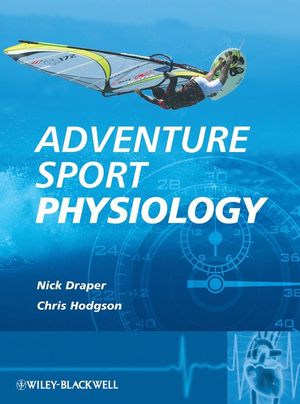Adventure Sport PhysiologyISBN: 978-0-470-01510-0
Hardcover
456 pages
November 2008
 Other Available Formats: Paperback
|
||||||
Acknowledgements xi
Preface xiii
Part I: The Foundations of Adventure Sport Physiology 1
1. A historical perspective: the context of adventure physiology 3
1.1 The earliest physiologists 3
1.2 The founders of exercise physiology 11
1.3 The development of environmental physiology 13
1.4 The origins of adventure physiology 15
1.5 The development of adventure sports 18
2. Nutrition for health and performance 31
2.1 Introduction to nutrition 31
2.2 Carbohydrates 39
2.3 Fats 43
2.4 Proteins 49
2.5 Vitamins 54
2.6 Minerals 58
2.7 Water 61
2.8 Digestion 62
2.9 Components of a healthy balanced diet 64
2.10 Summary and study questions 68
3. The structure and functioning of the human body 71
3.1 The cellular basis for life 71
3.2 Skeletal system 80
3.3 Nervous system 84
3.4 Endocrine system 96
3.5 Summary and study questions 102
4. Fundamental systems for adventure sports 105
4.1 Muscular system 105
4.2 Respiratory system 121
4.3 Cardiovascular system 133
4.4 Energy systems 145
4.5 Summary and study questions 151
5. Training fundamentals 155
5.1 Introduction to training methodology 155
5.2 Developing and designing training programmes 176
5.3 Summary and study questions 194
Part II: The Physiological Demands of Adventure Sports 197
6. Power and power endurance: the explosive activities 199
6.1 Introduction 199
6.2 Muscle fibre types 200
6.3 The phosphagen system 204
6.4 Physiological response to power and power endurance activities and fatigue 211
6.5 Physiological adaptations to power training 218
6.6 Nutritional ergogenic aids to power performance 219
6.7 Summary and study questions 223
7. Anaerobic endurance: the lactate tolerance and management activities 227
7.1 Introduction 227
7.2 Glycolysis 228
7.3 Physiological response to anaerobic endurance activities and fatigue 239
7.4 Physiological adaptations to anaerobic endurance training 245
7.5 Nutritional ergogenic aids to anaerobic performance 246
7.6 Sport-specific physiology 248
7.7 Summary and study questions 257
8. Intermittent adventure activities 261
8.1 Introduction 261
8.2 Physiology of intermittent activities 262
8.3 Training and recovery in intermittent activity 267
8.4 Nutrition and ergogenic aids for intermittent activities 268
8.5 Water immersion 271
8.6 The physiology of water-based adventure sports 282
8.7 Summary and study questions 295
9. Aerobic endurance part 1: high-intensity activities 299
9.1 Introduction 299
9.2 Aerobic-anaerobic transition and lactate threshold 300
9.3 Physiological response to high-intensity endurance activities 307
9.4 Physiological adaptations to training 318
9.5 Nutritional ergogenic aids to aerobic performance 320
9.6 Physiological challenge of thermal stress 323
9.7 The physiology of land-based adventure sports 333
9.8 The physiology of water-based adventure sports 336
9.9 Summary and study questions 346
10. Aerobic endurance part 2: lower-intensity activities 351
10.1 Introduction 351
10.2 Aerobic system 352
10.3 Physiological response to lower intensity endurance activities 373
10.4 Physiological adaptations to training 376
10.5 Nutritional ergogenic aids to aerobic performance 377
10.6 The effects of hyperbaric and hypobaric condition on performance 382
10.7 The physiology of mountaineering 396
10.8 Summary and study questions 406
References 411
Index 429



